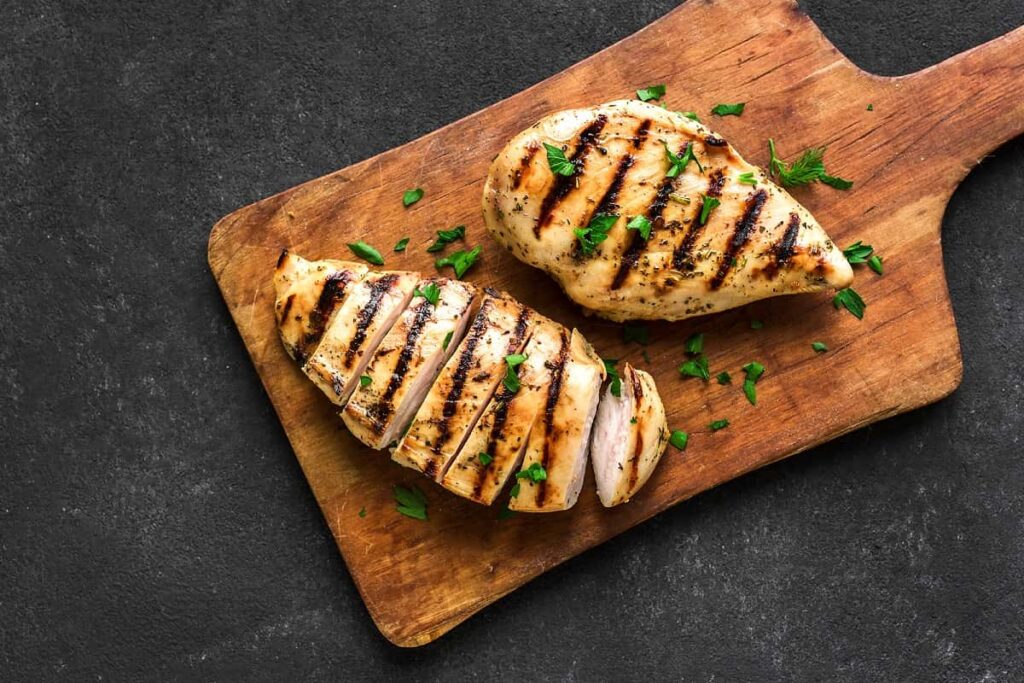7 Robot Baristas That Will Make You Coffee
Table of contents

While the first Starbucks was founded in 1971, the company didn’t start properly expanding until 1987 when they went from nine outlets to more than 29,000 outlets as of 2018. That translates to opening 2 stores a day for 32 years in a row. It all started in ‘Murica, where 90% of Americans consume caffeine in various forms every single day with the average Joe consuming two cups of coffee daily. It’s not only the Americans who are addicted to drinking coffee, as 2.25 billion cups of the stuff are consumed across the globe annually. Ever wonder who drinks the most coffee? Surprisingly, it’s the Scandinavian countries.

Drinking coffee has become an integral part of the daily rituals for millions worldwide with French philosopher Voltaire crediting the 40–50 cups he drank per day as the inspiration for his genius. He even gave out huge bonuses to servants who could bring him his favorite coffee beans. He probably wasn’t brewing all that coffee himself but was being served coffee by someone we refer to today as a barista. If we do some back of the napkin math on how many baristas Starbucks has making coffee, we might guess there are six baristas employed per location who all work full time. That’s 174,000 baristas and let’s say they’re getting $10.59 an hour which is the average hourly rate paid by Starbucks according to PayScale. That’s $22,112 a year or $3.8 billion in labor costs per year.
There are two ways to increase earnings-per-share if we don’t consider share buybacks. The first is to increase revenues, and the second is to decrease costs. Starbucks will find it increasingly difficult to increase revenues as they approach a $90 billion valuation, but they won’t look to reduce costs by using robotic baristas. That’s according to an article by Business Insider which argues that a company which spends more on employee health benefits than coffee isn’t likely to switch to robotics ever. People want to be served coffee by a tattooed smiling barista who doesn’t eat animal products and thinks that capitalism is evil. Still, that won’t stop other firms from looking at using robots to serve coffee. In most restaurants, labor accounts for about 60% of expenses. That’s why Zume Pizza has now raised $423 million to create a business around robots that make pizza. Let’s look at seven companies using robots to prepare and serve you a cup of coffee.
Briggo


It’s also possible for customers to place their orders in advance via the Briggo app, save their favorite orders for a faster transaction next time, or receive a text once a drink is ready. If you want to try it out, check out one of their seven locations – Austin Airport (Gate 17), San Francisco Airport (Coming Spring ’19), Lockheed Martin in Fort Worth, 3M in Austin, Dell in Round Rock, the Austin Convention Center, and the Houston Convention Center.
Cafe X
Founded in 2015, San Francisco startup Cafe X Technologies has taken in a total of $14.5 million with their seed round closing in August 2018 from the likes of Silicon Valley Bank, angel investor Jason Calacanis, and The Thiel Foundation. Interestingly, Café X and Briggo actually had a showdown of sorts in 2018 when the San Francisco startup blocked the Austin company’s move to offer their coffee in California airports. Here’s what Cafe X COO Cynthia Yeung said to the SFO commissioners at the time.
“We are striving to be a very, very responsible employer in San Francisco bringing trade jobs back to the city. And I want to understand why, with so little transparency, this trial program was awarded to a Texas-based company?”
Although both robot baristas aim to serve good coffee to its patrons, Café X and Briggo have different approaches to this goal. Briggo functions like a high-end coffee vending machine with all the tech that comes with their robot baristas. The Texas startup also roasts its own coffee. In contrast, Café X focuses on adding flair to every customer’s coffee experience. That is, theatrical coffee-making is at front and center of their service. The San Francisco startup also gets its coffee from third party vendors.

Here’s how the Cafe X robot barista works. Customers are greeted by a robot found inside a kiosk that looks like an aquarium. You interact with the machine through a huge window made of plexiglass where you’ll type your order into the system using a tablet. Alternatively, you can send your coffee order via Cafe X’s mobile app. It sure sounds a lot more entertaining, and you can check them out at two San Francisco locations – 578 Market St, and 135 4th St.
GBL Robotics


Apart from coffee, MontyCafe robots can also serve food, such as muffins and cupcakes, with soft serve ice cream anticipated to join their menu soon. They’re supposed to have at least one location open in Moscow, and if you speak Russian, could you kindly drop us a note and let us know if they have any other locations? Their website is only in Russian and we’re Americans so we only speak the Queen’s tongue.
Update 09/01/2019: The CEO reached out to us with a link to their international website which you can see here. They now have two installations in Russian shopping malls and one in Oakland. We’re going to send one of our MBAs back over to Russia to meet them early next year.
Aabak


Like any specialty coffee barista, Rocky carries out all the manual gestures of the espresso brewing process starting from grinding the beans to sealing the lid on your cup. That is, it’s practically an exact copy of a human barista sans the beard and small talk. Our next company is also bootstrapping a robotic barista.
Crown Coffee
“Pioneering a technology-led concept that combines traditional Roman coffee served up through mobile coffee carts operated by Ella the Robotic Barista, Crown Coffee finds newer, smarter ways to bring great coffee to you,” says the Singapore company. In 2016, Crown Coffee started Crown Robotics and conceptualized a fully automated café solution managed by 6 axis robots. You can see the robot in action at Crown Coffee CT Hub 2.

Their mobile carts with robots that sling coffee have been engaged at many events and expos, weddings, and roadshows.
H.I.S.

As is customary in Japan, customers go to a nearby vending machine to get a ticket. The robot barista will then scan the QR code on the ticket to begin processing the coffee order. The $3 coffees take 3-4 minutes to prepare, and neither the price nor the time it takes seem impressive. In Japan, you can get an excellent cup of freshly ground and brewed coffee at the 7-11 for just a dollar in less than 2 minutes.
If that robot looks familiar, maybe it’s because you’ve seen it before in an article we wrote titled “Will Rethink Robotics Become a Future Robot Stock?” The answer is absolutely not, because the company went bust. Read on.
Rethink Robotics

Update 03/25/2019: We were contacted by the HAHN Group which stated that they acquired the robot technology from Rethink Robotics and they’re using it to strengthen their service offering for collaborative robotics.
However, Rethink Robotics is not the only firm that has a one-armed robot that can make coffee.
ABB


It’s not exactly high-tech, or is it even acting as a barista, but it does serve to demonstrate the agility of their robotic product offerings. ABB sells YuMi as a collaborative robot that will share the workload of human co-workers. There’s no reason one of these cobots couldn’t work alongside a human barista in the future. You then get the best of both worlds.
Conclusion
In one article we came across, Briggo had talked about how their brewing machines were best suited for small locations where people might want to grab a great cup of coffee very quickly – for example, airports and company campuses. In addition to speed and reduced labor costs, robot baristas also boast consistency and the ability to create a digital twin to improve the process over time. When it comes to the bigger coffee chains like Starbucks, there are lots you can do with technology that doesn’t involve robotics.
Starbucks already has the ball rolling with Starbucks Reorder, a collaboration with Amazon Alexa via its Echo device or Fire TV stick. Linking your Amazon and Starbucks accounts allows you to order from any of the 10 stores you previously visited. The skill is still limited though, since customers can only get their “usual” drink as opposed to ordering new ones off the menu. Coffee Bean and Tea Leaf have also collaborated with Amazon and launched a similar offering. Meanwhile, Dunkin Donuts opted to work with Google Assistant for their version of this smart tech. This might help to reduce queues, but they still need to pay expensive humans to make the coffee.
Sign up to our newsletter to get more of our great research delivered straight to your inbox!
Nanalyze Weekly includes useful insights written by our team of underpaid MBAs, research on new disruptive technology stocks flying under the radar, and summaries of our recent research. Always 100% free.














